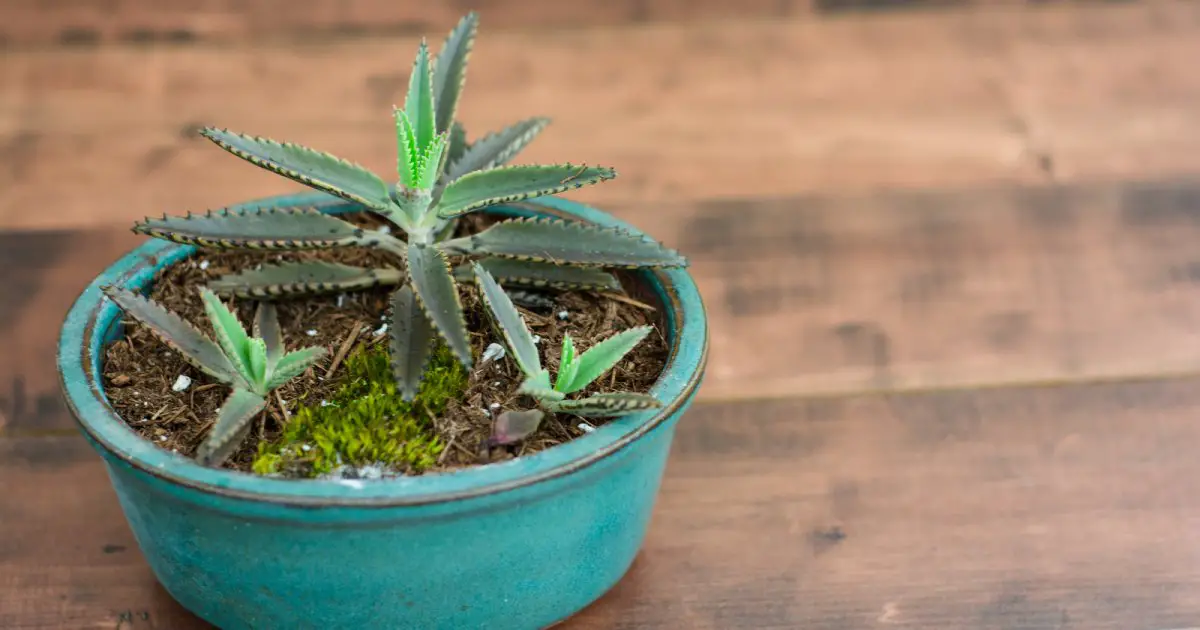Many people have a love-hate relationship with their mother, so it makes sense that Mother of Thousands, Kalanchoe daigremontiana, is considered both a charming and beloved houseplant and a toxic invasive weed. Its bluish-green foliage is eye-catching, mainly because it grows dozens of adorable baby plantlets along the edges of its leaves. Once they fall off or are removed, the leaves have attractively toothy serrated edges that earned the plant one of its other nicknames, Alligator Plant.
Kalanchoe diagremontiana is a resilient starter plant for someone new to growing houseplants or succulents. Its eagerness to reproduce makes this succulent a good choice if you’re trying home propagation for the first time. To learn more about keeping your Mother of Thousands happy and becoming a bona fide succulent midwife, read on.
Quick Guide to Mother of Thousands
| Sun requirements | Full sun preferred, partial shade tolerated |
| Hardiness/Zone | Hardy outdoors only in Zones 9b+ |
| Water needs | Low water needs; drought-tolerant |
| Toxicity | Poisonous |
| Primary growth season | Fall and spring; may have summer and winter dormancies |
| Typical size at maturity | Three feet maximum; typically one foot indoors |
Growing Requirements for Kalanchoe Daigremontiana
Where to Plant
Pet Access
Kalanchoe succulents are beautiful but toxic, containing compounds that can cause cardiac arrhythmia, gastrointestinal distress, and paralysis, potentially leading to death.
They are hazardous to pets and livestock, and some medical research suggests they can be harmful to humans. If you have pets or small children, it’s best not to grow Mother of Thousands, either indoors or outdoors.
More info: Which succulents to avoid if you have pets
Indoor Considerations
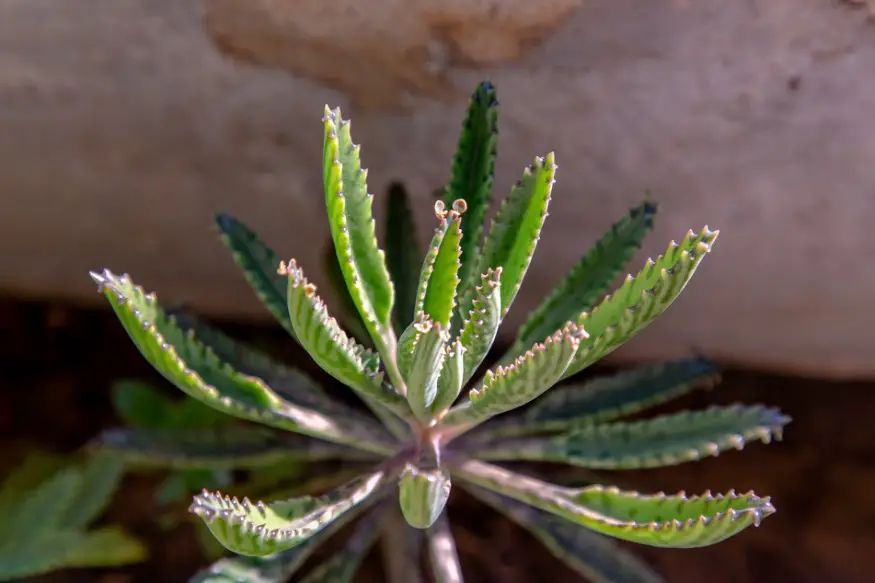
Mother of Thousands thrives indoors with indirect light, but it needs at least 5-6 hours of sun daily for optimal growth and the occasional purple blotch on the leaves.
This plant rarely flowers indoors, which isn’t a problem for most, since it’s grown for its unique foliage. If you’d like to encourage flowering, consider using a grow light.
Outdoor Considerations
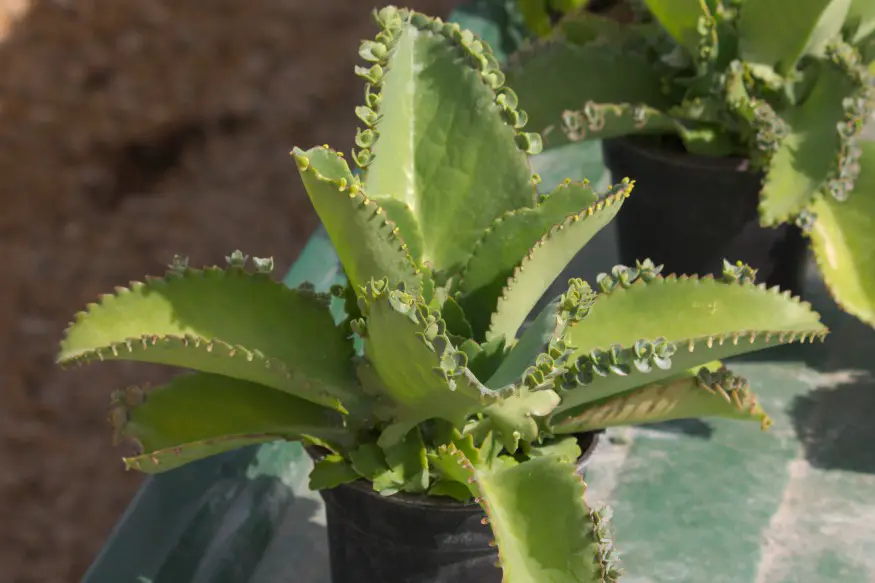
Mother of Thousands, native to arid Madagascar, thrives in warm, dry climates. True to its name, it reproduces rapidly, making it an invasive plant. Because of this, avoid planting it outdoors in the ground, regardless of the growing zone.
Note: If you’d like to grow it outdoors, use a pot with a wide brim to catch falling plantlets. Be sure not to toss them into the compost, as they might take root.
Growing Mother of Thousands in a pot is also preferable because it is not very cold-hardy and won’t survive the winter in Zones 9a and colder. They may persevere through an occasional brief frost, but you should move them inside before winter temperatures drop too low.
When moving them back, gradually transition them into direct light to avoid sunburn. For more on how to grow healthy indoor and outdoor succulents, check out our guide to succulent care.
Grown outdoors, with enough sunlight, Mother of Thousands will produce pale pink bell-shaped flowers from a cluster of flower spikes.
Container and Soil
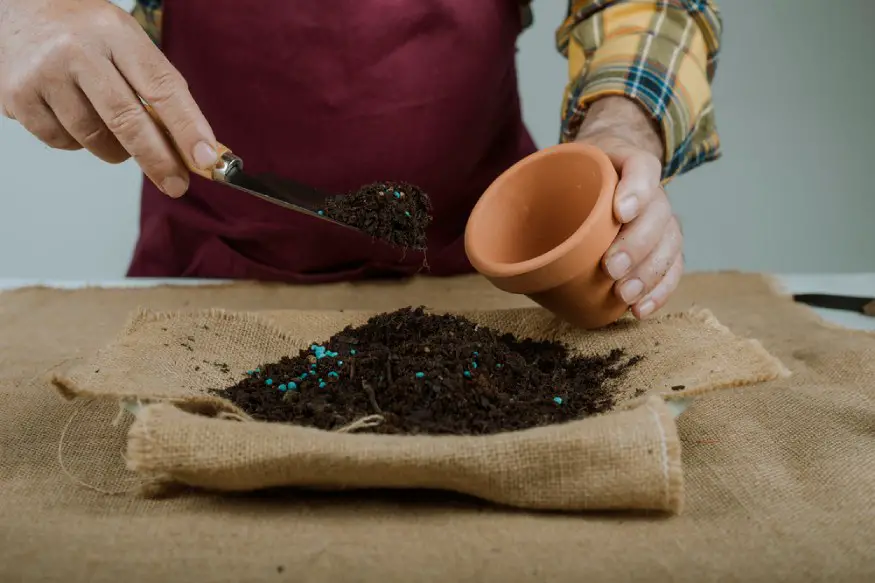
Like all succulents, Mother of Thousands prefers a well-draining potting mix and a pot with drainage holes.
If you’re using cachepots (without drainage), drill holes or use the ‘pot in a pot’ method to prevent waterlogging, which can cause root rot.
More info: Choosing the right pot for your succulents
For a homemade succulent potting mix, combine two parts potting soil (cactus blend), one part coarse sand (optional), and one part gritty amendment (like perlite or pumice). This mix allows excess water to drain properly.
To improve aesthetics, top the potting mix with a layer of mulch, pebbles, or small seashells.
Watering
Mother of Thousands, native to arid Madagascar, doesn’t need much water and can go weeks without it. When it does drink, it prefers to soak.
Use the “soak and dry” method: let the soil completely dry, then water it thoroughly, ensuring all excess water drains. For more information on this technique and other watering tips, refer to our guide to watering succulents, which includes a handy card for tracking watering and fertilizing.
Info: The ideal frequency of watering depends on many factors like dormancy. Kalanchoes typically go dormant during the summer and semi-dormant during the winter. When they aren’t growing, they consume far less water and nutrients, so make sure to water even less frequently.
Fertilizer and Maintenance

We recommend repotting all newly purchased succulents to ensure the roots are healthy. If you find unhealthy roots, cut them away with a sharp, sterile knife before replanting them into a pot with drainage. You might find our guide to choosing a succulent pot helpful.
Note: Refreshing the plant’s potting soil means avoiding growing your plant in inappropriate potting soil too high in organic matter or soil that may contain soil-borne diseases or pests.
If you want your plant to have several branches rather than one central branch, you can top a young plant (behead it). The stump should regrow several branches, and you can propagate the stem.
It’s unnecessary to fertilize your Mother of Thousands the first year after repotting because the fresh potting mix will get plenty of nutrients. In the second year, fertilize it occasionally with an organic liquid cactus fertilizer:
- Dilute your fertilizer to at most half-strength (quarter-strength is best if it isn’t a cactus/succulent-specific fertilizer).
- Apply only during the spring and fall growing seasons, not during the plant’s winter and summer dormancy.
The only other maintenance your Mother of Thousands will need are:
- Removing any baby offsets that fall off so that they don’t sprout in the mother’s pot and crowd her.
- Occasionally removing old leaves from the base of the plant.
Mother of Thousands Propagation
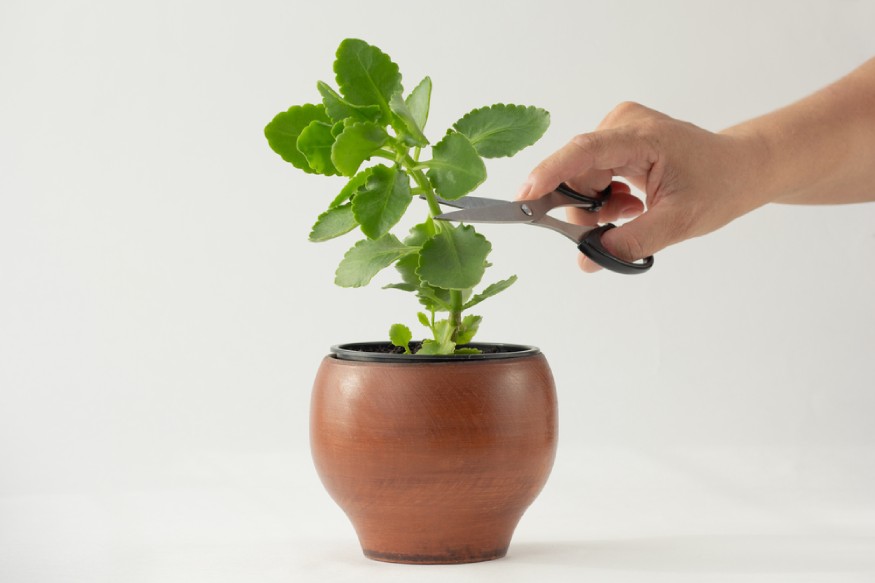
You can propagate your Mother of Thousands using stem cuttings, but why bother?
This succulent got its common name from the dozens of adorable baby plantlets that grow along the edges of each leaf. These babies will fall off and die unless they are allowed to grow into a new plant, so by propagating your Mother of Thousands, you’re really doing her a favor by finding suitable homes for her excess offspring.
Offset Propagation
Harvesting the offsets is easy — you simply pull them gently off the leaves. An even easier method is to wait until they drop off on their own. In nature, they would regrow right then and there, so it doesn’t take much for you to replicate the necessary conditions.
- Harvest offsets by gently pulling them off the leaves or collecting the fallen babies
- Set them into a planter, roots down, on top of a bed of moist succulent-appropriate potting mix.
- They will take root and grow without any more help from you, just like they would in nature.
Note: Keep in mind that no matter how much experience you have with propagating plants, some of these babies will not make it. That’s why it’s a good idea to propagate a bunch of them at once. They also may take a few months to become well-rooted.
Stem Propagation
If you want to propagate the stem (for example, if it breaks accidentally, or you want to top your plant to encourage branching), you can easily do so.
- Cut it or trim the broken end with a sharp, sterile knife or pruners.
- Then cut or strip away a few leaves from that end.
- 3 Allow the stem to cure (dry out) by leaving it on a plate out of direct sunlight for a couple of days. It will form a dry callous over the raw area.
- Once it is cured, simply stick the end directly into a pot of moist, well-draining succulent potting mix and gradually return it to a sunny spot.
Note: Be careful not to leave craters on the stem when removing the leaves. You want the raw area to be flush with the stem. The material that connects the leaf to the stem, called meristem tissue, will encourage root growth.
Showing Your Mother (of Thousands) That You Love Her
Your Mother of Thousands is a woman of simple tastes. Give her a warm and sunny home, occasional help cleaning the house, childcare, and a night of heavy drinking once in a while, and she’ll be happy to let you live in her house as long as you want.

